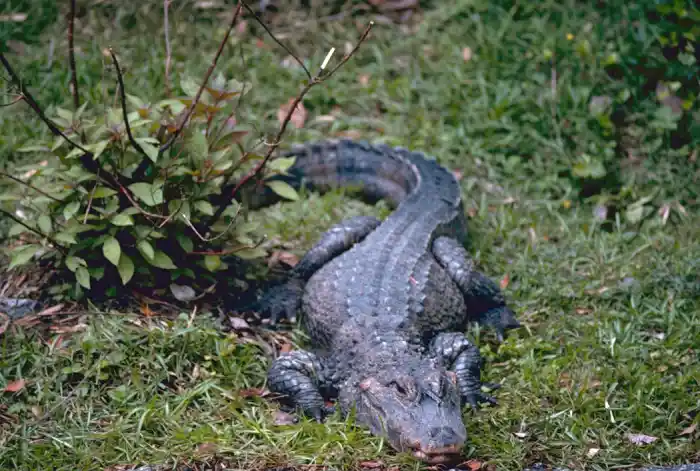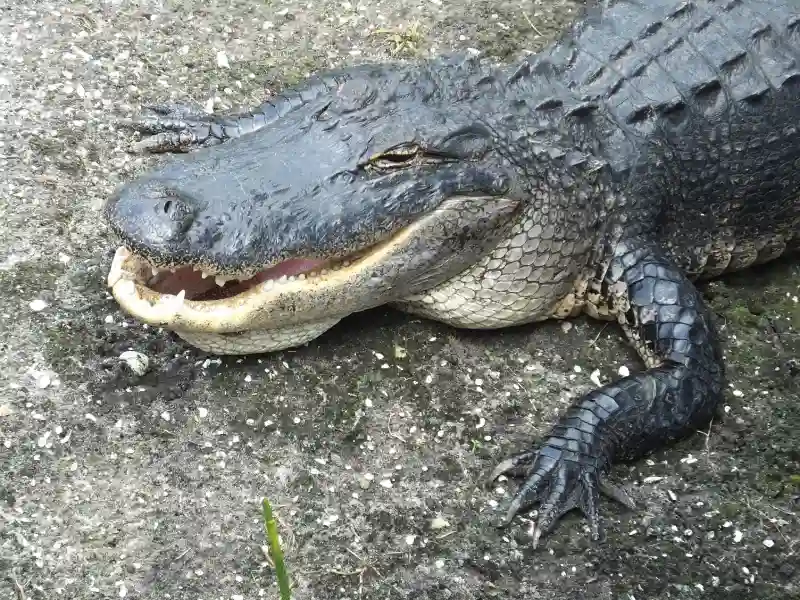Alligators are indeed members of the crocodilian group of reptiles and are found in different regions. The two main species of alligators are the American and Chinese alligator.
The American is native to the United States and can be found primarily in the southeastern parts of the country. They inhabit freshwater environments such as swamps, marshes, rivers, and lakes. American alligators have a wide distribution in states like Florida, Louisiana, Georgia, Alabama, Mississippi, and parts of Texas and North Carolina.
Chinese alligator is found in Eastern China, specifically in the Yangtze River basin. They have a more limited range and are considered an endangered species. Chinese are inhabit slow-moving freshwater bodies, including ponds, marshes, and rice paddies.
Both species share similar characteristics such as tough and scaly skin, webbed feet for swimming, long tails for propulsion, and powerful jaws for catching prey. However, they have distinct physical differences and adaptations to their respective habitats.
It’s important to appreciate these fascinating reptiles from a safe distance and respect their natural habitats.
How Much Do Alligators Weigh?
They are large reptiles known for their impressive size and weight. The weight of an alligator can vary depending on the species and its age. The larger mississippiensis can reach lengths of up to 15 feet and weigh between 500 to 1,000 pounds. This makes them one of the largest reptiles in North America.

On the other hand, Chinese sinensis are smaller in size. They generally measure around 4 1/2 to 5 feet in length and weigh approximately 80 pounds. These alligators are an endangered species and are found only in a small area in China.
How Much Does A Baby Alligator Weigh?
Baby typically weigh between 1 and 2 ounces when they hatch from their eggs. They measure around 6 to 8 inches in length at this stage of their development . Female build nests made from sticks, mud, and plants, where they lay 10 to 50 eggs. After an incubation period, the hatchlings emerge and begin their journey in the world as small and vulnerable creatures.
How do baby alligators survive and grow in their early stages of life?
Baby employ various strategies to ensure their survival and growth during their early stages of life. These strategies include protection from predators, reliance on their mothers, and adaptations for feeding and development.
Protection from predators
Baby alligators are vulnerable to a wide range of predators, including large birds, carnivores like wild pigs, and occasionally others.
To enhance their chances of survival, they tend to stay together in groups, as there is safety in numbers. Closeness and proximity to one another provide a beneficial defense against potential predators. female baby alligators play a vital role in protecting their young.
They safeguard the eggs in the nest, hatchlings, and babies up to three years old. This protective behavior ensures the safety of the young’s during their most vulnerable years.
Contributing to the survival and growth
Female play an active role in nurturing their young. After laying their eggs, they guard the nest and regulate the temperature to ensure healthy development.
Once the eggs hatch, the mother carries the hatchlings in her mouth to transport them to water. This behavior provides both protection and a suitable environment for the newly hatched. The mother alligator continues to provide care and protection for her young for up to three years.
Feeding and development
Baby alligators have specific adaptations that enable them to acquire food and grow. They are born nearly black, which helps them blend in with their surroundings and remain camouflaged from potential predators.
In terms of feeding, baby primarily rely on insects, small fish, and small aquatic invertebrates for nutrition. As they grow, their diet expands to include larger prey.
Baby have a unique hunting technique called “sit and wait.” They remain immobile and patiently wait for their prey to come within striking distance. This hunting strategy allows them to conserve energy while effectively capturing food.
10 interesting fact
They are known for their incredible size and strength. They can grow up to 13-15 feet long, with the largest recorded individual measuring 19 feet and 2 inches!
Unlike crocodiles, alligators have a more U-shaped snout. This is one of the key physical differences between the two reptiles.
They have a unique way of regulating their body temperature. They thermoregulate by basking in the sun to warm themselves up, and then by cooling off in the water or shade.
Baby alligators, known as hatchlings, are born from eggs. They measure about 6-18 inches long and weigh around 1/2 pound.
Alligators are opportunistic feeders and their diet mainly consists of fish, turtles, birds, and mammals that come near the water’s edge.
They are incredibly powerful swimmers and can reach speeds of up to 20-30 miles per hour in water.
They have an impressive lifespan and can live up to 50-60 years in the wild.
They have a unique vocalization, known as a “bellow.” This loud, deep roar is used for communication between individuals and during courtship displays.
They play a crucial role in their ecosystems as apex predators. They help regulate populations of other species and create habitats for numerous other organisms.

